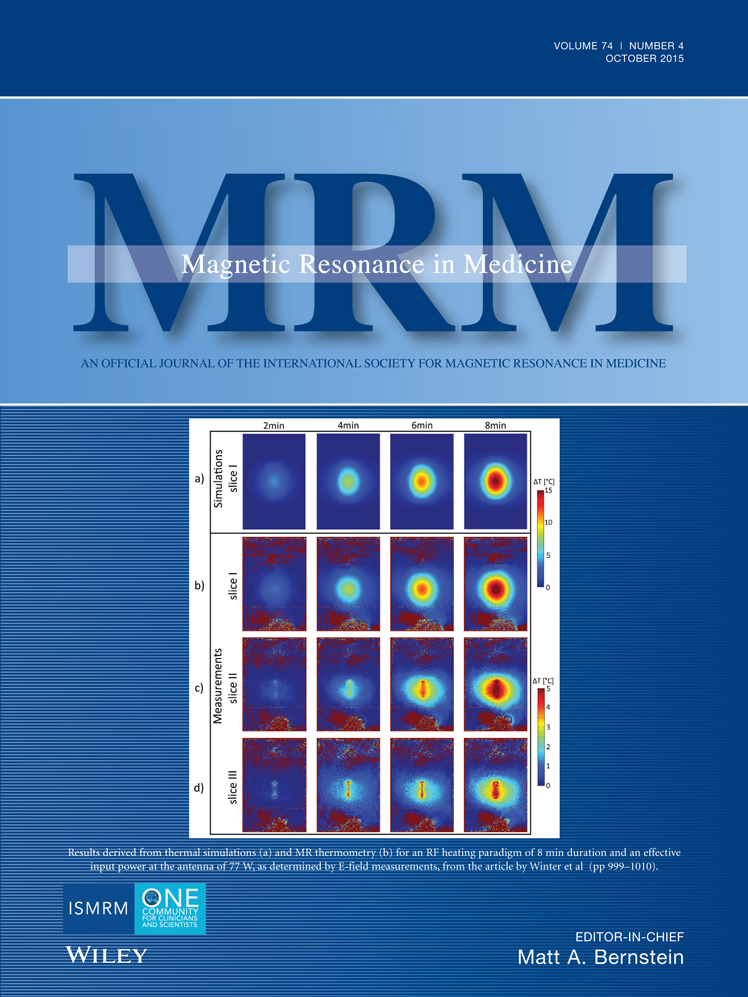Improved volume selective 1H MR spectroscopic imaging of the prostate with gradient offset independent adiabaticity pulses at 3 tesla
Parts of this work have been presented at the annual scientific meeting of the International Society for Magnetic Resonance in Medicine in 2013.
Abstract
Purpose
Volume selection in 1H MR spectroscopic imaging (MRSI) of the prostate is commonly performed with low-bandwidth refocusing pulses. However, their large chemical shift displacement error (CSDE) causes lipid signal contamination in the spectral range of interest. Application of high-bandwidth adiabatic pulses is limited by radiofrequency (RF) power deposition. In this study, we aimed to provide an MRSI sequence that overcomes these limitations.
Methods
Measurements were performed at 3 T with an endorectal receive coil. A semi-LASER sequence was equipped with low RF power demanding gradient-modulated offset-independent adiabaticity (GOIA) refocusing pulses with WURST(16,4) modulation, with a 10 kHz bandwidth.
Results
Simulations and phantom studies verified that the GOIA pulses select slices with a flat top and sharp edges and minimal CSDE. The sequence timing was tuned to an optimal citrate signal shape at an echo time of 88 ms. Patient studies (n = 10) demonstrated that high quality spectra with reduced lipid artifacts can be obtained from the whole prostate. Compared with PRESS acquisition at 145 ms the signal-to-noise ratio (SNR) of citrate is increased up to 2.6 and choline up to 1.3.
Conclusion
An MRSI sequence of the prostate is presented with minimized spectral lipid contamination and improved SNR, to facilitate routine clinical acquisition of metabolic data. Magn Reson Med 74:915–924, 2015. © 2014 Wiley Periodicals, Inc.




